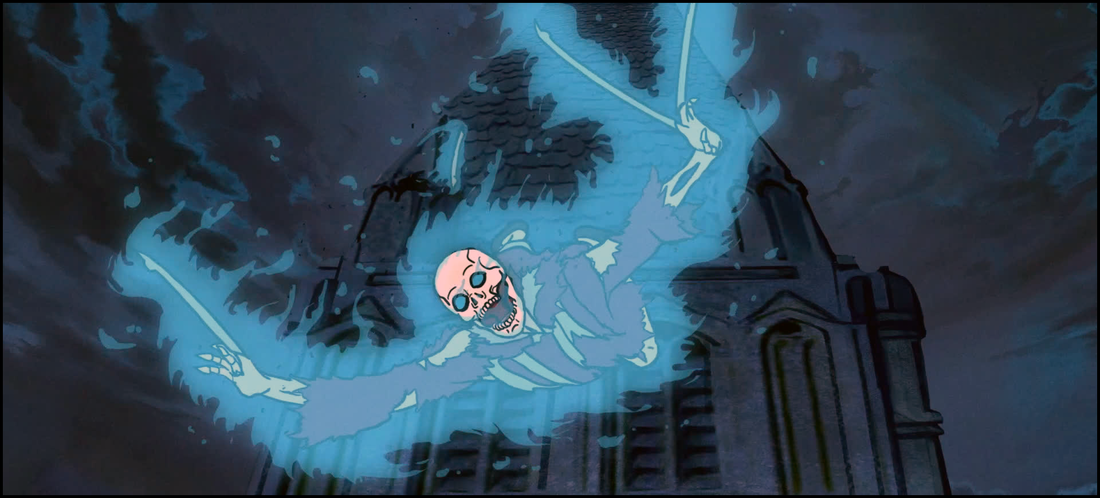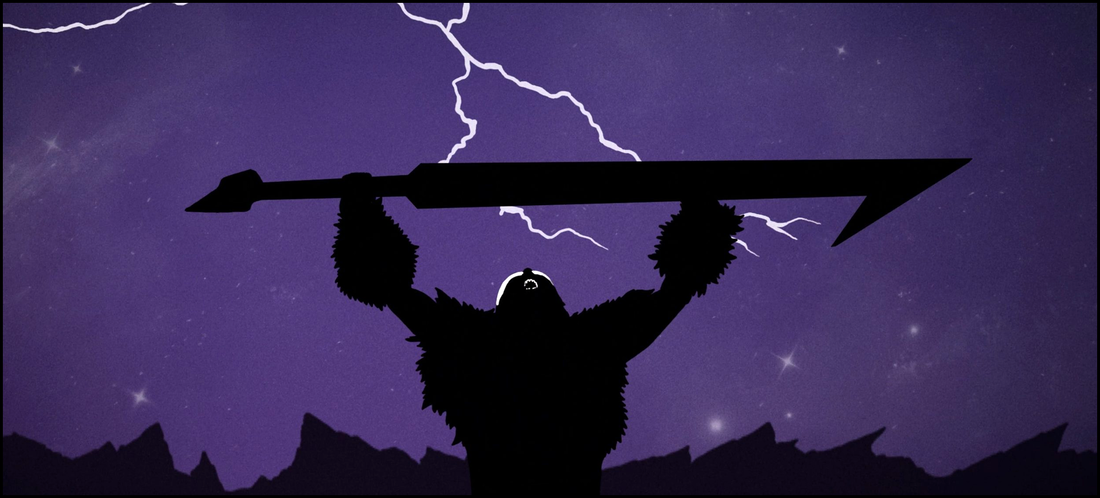When I was in my teens, there was a string of adult-themed animated fare that made the rounds at the box office. Granted, I wasn't old enough to gain admittance to all of them (well, not legally, anyway), and I don’t recall a few of them hitting the silver screen in my small Midwestern hometown; but entries like Wizards (1978), The Lord Of The Rings (1978), Heavy Metal (1981), Fire And Ice (1983), and Rock & Rule (1983) were a bit phantasmagoric to the minds of those who partook their visual pleasures. I could go on a bit about their creators and/or their particular animation techniques (hello, rotoscoping!), but what really mattered most (so far as this viewer was concerned) was that the films delivered the kind of stories I and many like me were most familiar with in a way that made them entirely relatable. The fact that they were animated was just another creative plus: their makers validated the various books of my youth, and this made me a believer of their collective magic.
Alas, animated films like this disappeared from the cinemas largely because of the increasing demand for product in television. Serialized programs entered the world of genre entertainment in a big way in the 1980’s, as these earlier features paved the way for franchises like He-Man And The Masters Of The Universe, The Transformers, Thundercats, and G.I. Joe. Transitioning from the multiplex to the living not only expanded the possibility of weaving ongoing storylines but also advanced the prospect of what George Lucas had already proven to be any intellectual property’s gold mine: toy marketing. Practically everything animated from the 80’s came with toys-for-sale in stores, and this only helped cement the likelihood that there would be more to come.
What was missing from this evolution were those truly adult-centered tales, the likes of which distinguished those films from much of what had come before. Occasionally, production companies would talk about some kind of return to form, but audiences hungry for more of those true originals have braved a creative drought well into four decades … until just yesterday when a little something something titled The Spine Of Night fell (2021) across my desk.
Can you imagine my fanboy delight?
From the product packaging:
“This epic fantasy tale, about the history of a land that never was, begins when an ambitious young man steals forbidden knowledge from a sacred plant. He falls to its darker temptations and in so doing, unleashes ages of suffering onto mankind. As his power grows over the years, it falls to people of different ilk and culture to attempt to stop him. Among those who stand against him are a daring tomb-raider, star-crossed lovers, a maniacal necromancer, winged assassins, and an undying guardian.”
Yes, yes, yes! I proudly admit that I illegally snuck into 1981’s Heavy Metal. (Erm … anyone know the statute of limitations on that sort of thing?) The truth is I was sixteen at the time; we bought our tickets for something else but had absolutely no problem slipping in with the crowd to the R-rated animated flick. Sure, we spent the first few moments watching for an usher to perhaps pull us out, but we situated ourselves between some obvious adults so that we likely looked part of a family night at the movies. Ha ha, Mr. Man. Score one for the juvies!
Anyway, we weren’t really all that impressed with the flick. Oh, we had enough fun with it to make for passing entertainment, but the kinda/sorta chop-chop of short stories going from one to the next never really engaged our minds … certainly not the way the animation did. It wasn’t anything flowery or honestly all that flamboyant, but the group I hung out with were never much interested in animation, so this was a modestly new experience for us. What we appreciated was the fact that the stories were geared more for an adult audience, even with the comic relief thrown in for good measure.
Like Heavy Metal, Spine’s chief flaw is that there’s never enough investment in its characters for the audience to truly cheer its heroes, hiss its villains, nor honor its victims. It’s almost as if animation here was an afterthought, and the creators believed its audience could be swayed by the known public faces of the gathered vocal talent. Consequently, Gelatt and King’s script largely relies on archetypes here – big-breasted women, sneering evildoers, etc. – to traffic in their mostly violent Fantasy adventure. If all of the animated sequences were rendered with some individualized motifs, then there would perhaps be more to cherish here; sadly, many of the character creations are a bit milquetoast by comparison to their various important quests. In fact, our lead heroine Tzod (voiced by the already proven ‘Warrior Princess’ Lucy Lawless) appears so blandly drawn I can’t tell if that’s a human skull adorning her head or a really thin girl’s pelvic bone.
Sadly, many of these voice performers don’t quite hit their marks. Thankfully, Lawless gives a serviceable reading (given her advanced screen presence) though I honestly expected more. Richard E. Grant does a solid job bringing to life ‘The Guardian,’ an aged knight tasked with protecting the last known sprout of The Bloom. Betty Gabriel brings a bit of focus to her warrior/librarian, though I found that storyline a bit confusing. (Why were all these books sacred? Why were the people denied access? Why was leadership encouraging so much suffering?) Despite a sizable track record in voice work, one would think Patton Oswalt knew all-too-well what was going on here, but his tyrannical overlord Lord Pyrantin sounds less like a force of dastardly evil and more like a disgruntled civil servant here. A big miss … but I cheered his demise.
Still, I’d be lying if I told you I wasn’t grinning ear-to-ear with the effort. Granted, some of this is owed to the obvious nostalgia I’ve discussed at lengths, but in all honesty the worlds of epic Fantasy deserve cinematic exposure like the crew musters here, even if the end result is a bit muddled or undercooked. Hopefully, Spine will serve as a harbinger, the powerbrokers will realize this territory needs to be explored, and audiences will be treated to (at least) more of the same or maybe even something better. This was still a great attempt, and I’d like to see them keep at it.
Don’t let fans wait another four decades to try again.
As for the special features? Thankfully, the producers haven’t let you down, and they’ve ponied up the following:
- The Making Of The Spine Of Night – short featurette
- Exordium (2013) – short film (8 min.)
- Mongrel – short film
Recommended. As imperfect as The Spine Of Night (2021) may be (and, no, it ain’t perfect), I still had an awful lot of fanboy fun with this entry in pure Fantasy the likes of which we just don’t get to see cinematically all that often. (There’s the real shame here, people. A damn dirty shame!) Though I found the narrative a bit jumbled at times, these interconnected stories drew down to a solid finish; I just wish we could’ve spent a bit more time developing some of these secondary characters. That way, their sacrifices would’ve been much more meaningful than what they’re given here.
In the interests of fairness, I’m pleased to disclose that the fine folks at RLJE Films provided me with a complimentary Steelbook 4K Ultra HD Blu-ray by request for the expressed purposes of completing this review; and their contribution to me in no way, shape, or form influenced my opinion of it.
-- EZ





 RSS Feed
RSS Feed